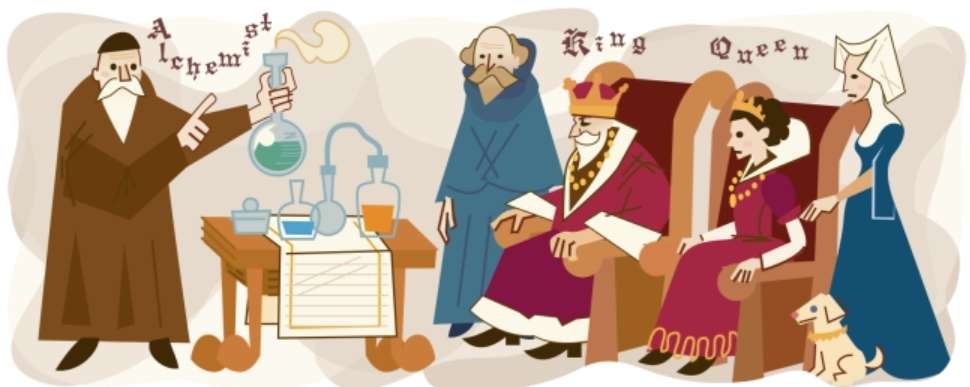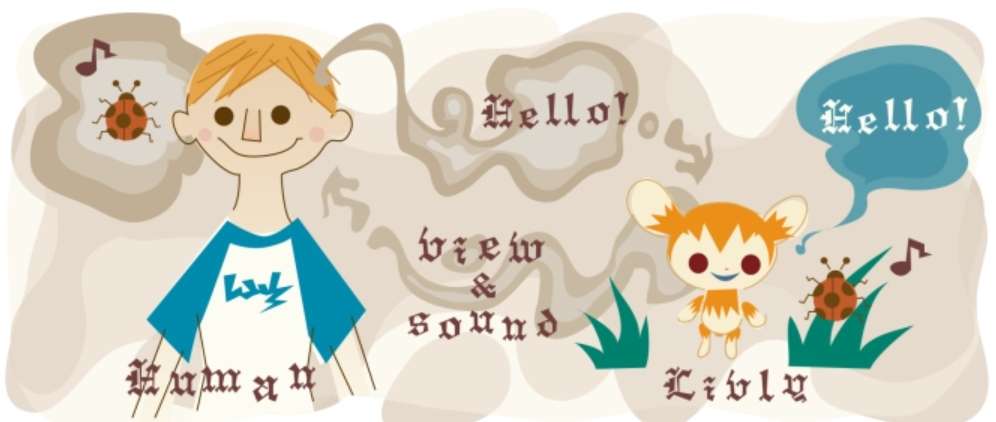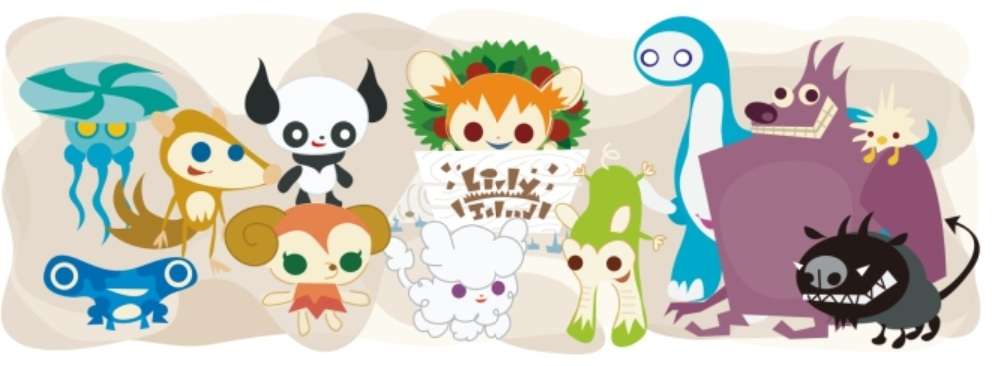
 The History of Classic Livly
The History of Classic Livly
 To know about Livlies we have to first go back to the Middle Ages in the time of alchemy. Somewhere in Medieval Europe,
royal families had ordered alchemists to spend their days researching the creation of a "Philosopher's Stone."
To know about Livlies we have to first go back to the Middle Ages in the time of alchemy. Somewhere in Medieval Europe,
royal families had ordered alchemists to spend their days researching the creation of a "Philosopher's Stone."
A Philosopher's Stone is a mythical stone which is said to be capable of turning base minerals, such as iron and zinc, into gold. Some people also believed that a Philosopher's Stone could cure all diseases and could aid in achieving immortality.
The ruling class provided alchemists with research sites and sought prodigious wealth and immortality in return.
 One day, a mysterious creature was born in one of the experimental flasks. It was a very small, golden-haired creature resembling
a cross between a rat and a monkey, which no one had ever seen before. The alchemists were overwhelmed with joy at the birth of this creature and named it "Pygmy" meaning "homunculus."
One day, a mysterious creature was born in one of the experimental flasks. It was a very small, golden-haired creature resembling
a cross between a rat and a monkey, which no one had ever seen before. The alchemists were overwhelmed with joy at the birth of this creature and named it "Pygmy" meaning "homunculus."
The ruling class was enraged as that was not what they were promised in return for the provision of experiment sites. However, not before long, their anger turned
into joy upon hearing what the alchemists had to say.
This mysterious creature fed on all kinds of small bugs and excreted jewels. The alchemists also discovered that over time, the creature would perform incredible magical
skills such as cast fireworks and blow strong winds in front of its owner.
 These mysterious creatures were bred over and over again and raised as royal pets for their jewels. They were kept in secret so that the
ruling classes in other regions would not find out about their existence. Among them, creatures of various forms were born and given unique names just like Pygmy.
These mysterious creatures were bred over and over again and raised as royal pets for their jewels. They were kept in secret so that the
ruling classes in other regions would not find out about their existence. Among them, creatures of various forms were born and given unique names just like Pygmy.
Perhaps the legends of fairies and monsters we know of today were passed down by people who once caught sight of these mythical creatures.
 The ruling class grew greedier over time. To obtain more jewels, they started force-feeding the creature and would press and squeeze their
bodies.
The ruling class grew greedier over time. To obtain more jewels, they started force-feeding the creature and would press and squeeze their
bodies.
They fought for ownership over creatures that excreted high amounts of jewels, shed blood out of jealousy, and exploited the creatures until they eventually all became
extinct.
After that, alchemists tried to recreate them, but war was brewing in the region. Amid the echaos, research on these mysterious creatures vanished into the darkness...
 Resurrected Livlies in the Modern Era
Resurrected Livlies in the Modern Era
 In the modern era, Dr. Muller-a self-taught biologist residing in Japan-has found an old wooden box in the storage room of his house. Inside the beautifully decorated box were things
left behind by Dr. Muller's grandfather: a journal, a quill and ink bottle, and a bag filled with colorful jewels.
In the modern era, Dr. Muller-a self-taught biologist residing in Japan-has found an old wooden box in the storage room of his house. Inside the beautifully decorated box were things
left behind by Dr. Muller's grandfather: a journal, a quill and ink bottle, and a bag filled with colorful jewels.
The journal contained Dr. Muller's grandfather's writings about his daily life, including an entry about the day Dr. Muller was born. Among them, there appeared a page fully
inscribed with mysterious language, diagrams, and illustrations. Fascinated by these inscriptions, Dr. Muller worked hard to decipher them.
The inscriptions revealed the story of mysterious creatures that existed in the Middle Ages. In fact, the jewels found along with the journal in the wooden box were their
excrement.
Enthralled by these creatures, Dr. Muller was determined to resurrect them in the modern era...
 Dr. Muller discovered some genetic material in the colorful jewels. He found the genes of various types of insects and some other genes that he had never seen before.
Dr. Muller used his own methods to conduct further research and experiments, and eventually, he managed to recreate the mysterious creatures.
Dr. Muller discovered some genetic material in the colorful jewels. He found the genes of various types of insects and some other genes that he had never seen before.
Dr. Muller used his own methods to conduct further research and experiments, and eventually, he managed to recreate the mysterious creatures.
 The resurrected creatures possessed a new skill not written in the journal. This skill was known as "soul-link."
The resurrected creatures possessed a new skill not written in the journal. This skill was known as "soul-link."
Soul-link is a power that allows creatures to communicate with their owners. This helps them understand what their owners are thinking and act accordingly.
Additionally, all that they see or hear will be communicated to their owners. This means that owners were able to communicate with each other through their creatures.
Due to these abilities, Dr. Muller gave them the name "livly," meaning "communication creature."
 Just like how the alchemists in the past gave the creatures unique names, the first-ever livly was given the name "Pygmy." Various species of livlies were born, and Dr. Muller gave
names to all of them.
Just like how the alchemists in the past gave the creatures unique names, the first-ever livly was given the name "Pygmy." Various species of livlies were born, and Dr. Muller gave
names to all of them.
Later, Dr. Muller decided to distribute the many livlies born in the laboratory to everyone in the world. It is not known exactly why he made this decision... According to
Dr. Muller himself, it was "due to personal reasons."


 The History of Classic Livly
The History of Classic Livly




 Resurrected Livlies in the Modern Era
Resurrected Livlies in the Modern Era




